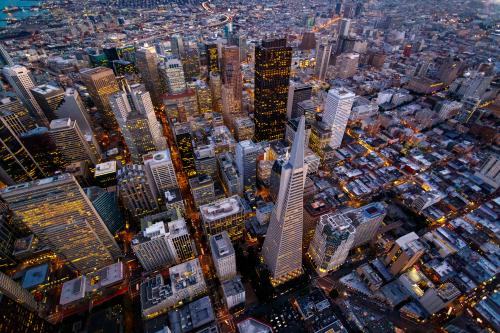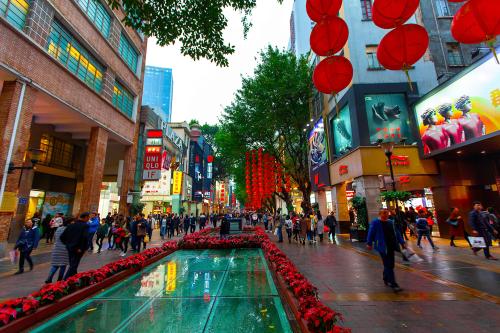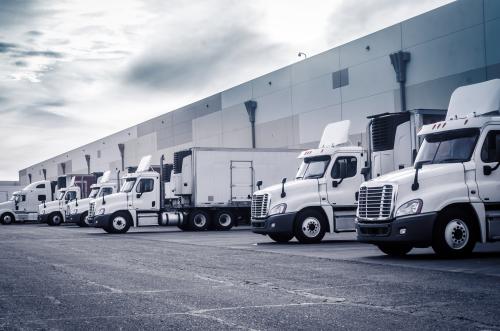The new edition of the Global Metro Monitor reveals a changing landscape of urban economic power, one dominated increasingly by metro areas in emerging countries. The top performers on our growth index between 2014 and 2016, a period that updates our previous analysis of urban growth, are concentrated in emerging Asia, with a few advanced economy metro areas also making the list.[i]


-
Xiamen, China

Located on the Taiwan Strait, Xiamen occupies a strategic position as a Chinese hub for air, land, and maritime commerce. As part of the Fujian Special Economic Zone and China’s Belt and Road Initiative, Xiamen has benefited from significant infrastructure investments from the national government. In her recent blog, our colleague Sifan Liu notes that the city of 3.8 million residents has also benefited largely from “booming financial services.” The city connects to North America through exchange programs between Xiamen University and 26 universities in the United States and Canada, including Cornell, Georgetown, and McGill.
-
Tianjin, China

Tianjin is one of China’s four direct-controlled municipalities, a position that provides it the administrative status of a province. In 2014, Tianjin was China’s third busiest port, after Shanghai and Ningbo-Zhoushan. Beyond its role in freight, Tianjin is aggressively taking the lead in artificial intelligence, with massive public investments in technology development. However, the city’s growth has come with costs. Its port’s 2015 warehouse explosion remains one of the largest manmade disasters in Chinese history. It revealed a weak regulatory system and corrupted land approval practices, which led to the jailing of Tianjin’s then-mayor.
-
Fuzhou, China

Similar to Xiamen, Fuzhou has recently been a manufacturing center but is now making a transition into a majority-services economy. Fuzhou anchors Fujian, the second largest e-commerce exporter among Chinese provinces. E-commerce giant eBay is opening a 323,000-square-foot industrial park in 2018. Fuzhou also ranked in the world’s top 10 fastest growing metro areas in the previous edition of our Global Metro Monitor.
-
Manila, Philippines

With a population of 13.2 million, metro Manila is about the size of Paris or Los Angeles. As the Philippines’ National Capital Region (NCR), metro Manila accounts for 36 percent of the nation’s GDP. International maritime trade and business process outsourcing have powered the region’s economic growth. As with other large Asian cities, rapid growth has come with challenges, and the new Regional Development Plan prepared by the Metropolitan Manila Development Authority (MMDA) focuses on infrastructure development to address the metro’s endemic congestion problem.
-
Delhi, India

With about 1 million fewer inhabitants than New York metro area, Delhi is India’s second largest metro area, behind Mumbai, with 19 million inhabitants. But while metro New York’s population is expected to stagnate, Delhi’s population could reach close to 40 million by 2030. Millions of Indians are moving to Delhi in search of higher living standards. Delhi’s GDP per capita is $18,600, three times the national average. Delhi’s government has significant powers in education, environment, and transportation, but is in the midst of an ongoing Supreme Court debate about the administrative functions it can control relative to India’s central government. The city faces crippling congestion and pollution challenges that have accompanied its rapid urbanization. In November 2017, the air monitoring station at the U.S. embassy in Delhi registered record-high pollution, prompting the city’s chief minister to harshly condemn Delhi’s pollution and air quality conditions.
-
Beijing, China

Like Tianjin, China’s capital city also has provincial status. Beijing’s population grew from 13.5 million inhabitants in 2000 to 21.7 million in 2016, on par with Mexico City. The Chinese giant still dominates the national economy with its counterpart Shanghai, even as economic growth and domestic migration patterns are shifting away from China’s megacities. Migration has been a topic of controversy in Beijing, with the government adopting a heavy-handed approach to migrants in the city.
-
San Francisco, United States

At the center of the Bay Area, San Francisco’s economy has powered U.S. technology growth. Its distinctive advantage in digital and biotech industries has attracted investment and talent, powering high growth in GDP per capita, which reached $101,000 in 2016. In Brookings’s U.S. Metro Monitor, San Francisco was one of 11 U.S. metro areas that improved on all metrics related to growth, prosperity, and inclusion. However, San Francisco must focus on closing significant racial and economic divides, and addressing high housing costs, to sustain growth in the years to come.
-
Chengdu, China

Chengdu, the capital of the southwestern province of Sichuan, has 11 million inhabitants. Located away from the coastal provinces, it has become a major destination for foreign direct investment and has perennially been one of the nation’s fastest growing metro areas. Chengdu’s leaders view science and technology as the metro’s next growth industry and have aimed to position the region as one of the nation’s rising tech hubs.
-
San Jose, United States

Like San Francisco, San Jose—the home of Silicon Valley—has experienced remarkable job creation and income growth due to the strong performance of the tech sector. Our colleague Amy Liu notes that San Jose outperformed national averages and nearly all other metro areas on job creation, productivity, and median wage growth over the past five years. But like San Francisco, San Jose has an urgent need to develop a more inclusive economy.
-
Dublin, Ireland

Dublin’s top rank results largely from nearly unprecedented GDP per capita growth, which in turn stems from a mix of a strong economy and oddities in the statistical accounting that generates GDP estimates. Many multinational companies legally reside in Dublin for tax purposes, but do not actually produce goods and services there. Some of these companies increased the amount of contract manufacturing they conducted abroad, but statistically those activities are reflected in local and national GDP accounting as exports. Dublin remains an attractive city in IT, creative industries, and financial services.
With seven of the ten best performing metro areas, Asia dominates this year’s economic performance index. Rapid growth creates significant economic opportunities in these emerging regional economies but it also brings challenges—congestion, housing affordability, pollution, inequality—that are testing government officials seeking to manage that growth. As sources of much of the world’s growth and opportunity, sustained global prosperity will rely on the effective stewardship of these large cities.
For more information on where your city ranks, see the new edition of the Global Metro Monitor.
[i] To compare the individual economic performance of metro economies, each ranks according to standardized score based on two indicators, GDP per capita and employment. These two indicators reflect the importance that people and policymakers attach to achieving rising incomes and living standards, as well as generating widespread labor market opportunity. For more details on the index, see methodological notes.
The Brookings Institution is committed to quality, independence, and impact.
We are supported by a diverse array of funders. In line with our values and policies, each Brookings publication represents the sole views of its author(s).








Commentary
The world’s ten best performing metropolitan economies: 2018 edition
Thursday, July 12, 2018